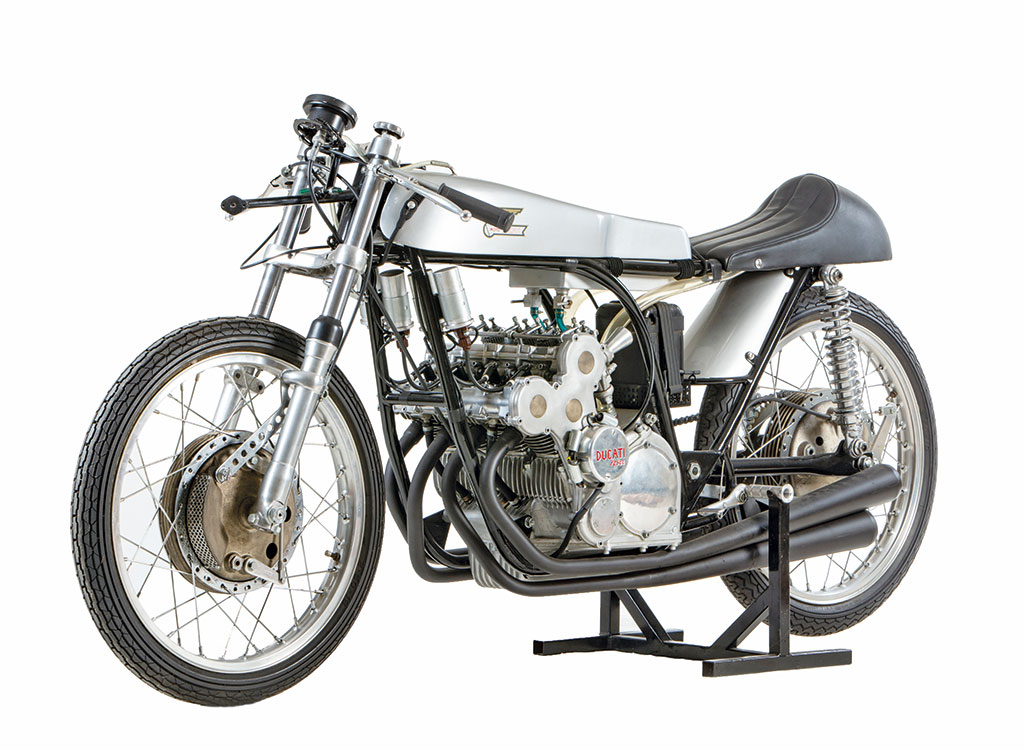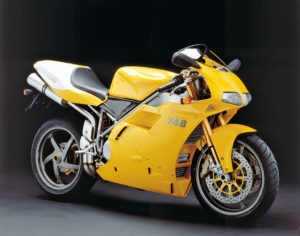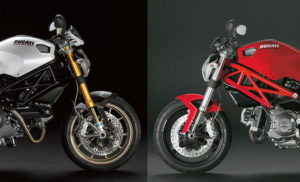There are those who say that the most beautiful story is the one you just dreamed of. For sure this one we present to you is one of the most expensive,at least judging by the amount necessary to buy the Ducati 125 four cylinders put to the charm by bonham’s auction house,along with numerous other pieces from the beautiful collection of Giancarlo Morbidelli.
But this is not a motorcycle like the others, although very rare and famous.
This is the dream that has never come true, the first step of the engineer Fabio Taglioni and Ducati towards solutions that only later would have been adopted in a systematic way.
On its historical value there are divergent opinions: Livio Lodi,curator of the Ducati museum, objects that it is a prototype made in a unique specimen and that has never raced, so it does not have a history behind it and should be attributed the same importance that several other studios remain in embryo, closed in the warehouses of Borgo Panigale; Giancarlo Morbidelli thought the opposite and spent a lot of time and money to get hold of it and restore it.
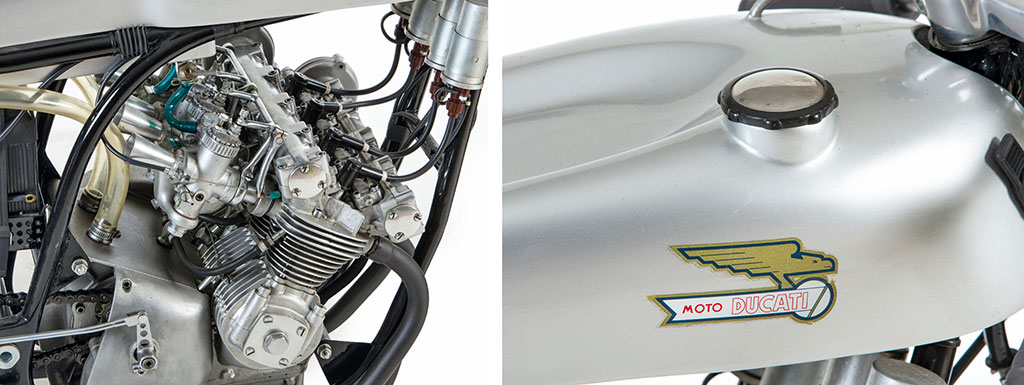
Everyone draws the conclusions they want, in any case it is a very interesting story that stemsfrom Ducati’s commitment to the 125 class races in the second half of the 1950s.
It was the time of recreational motorcycles, the big numbers were made with the models that today we would call small displacement, between 100 and 175 cc,and the races were used to sell them.
From the single cylinders had arrived many competitive satisfactions, but now they were no longer enough to withstand the competition and in the last test of the 1958 WorldChampionship, in Monza, the new Ducati 125 twin-cylinder had arrived.
But Taglioni had the ace up his sleeve and had begun to design another 125 that would have to set the new limit of the category.
The first four-cylinder Ducati, or more precisely one of the first two, since in the same years the Apollo was also designed, this one intended for road use, presented in 1963.
Initially the engine of the 125 had two valves per cylinder, but later a second was made to four, and therefore it was the first Ducati with that solution, which however the romagna engineer did not carry out in his subsequent projects, continuing to prefer the two valves; it did not have the desmodromic distribution, which had already been
It had the dual camshaft distribution on the head controlled by gears and the eight-speed gearbox,with the engine inserted into a double cradle frame.
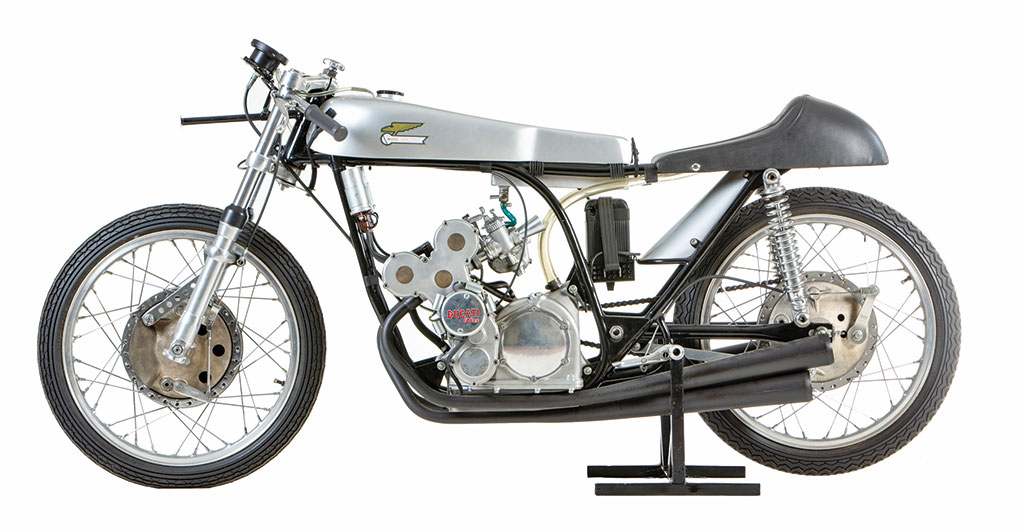
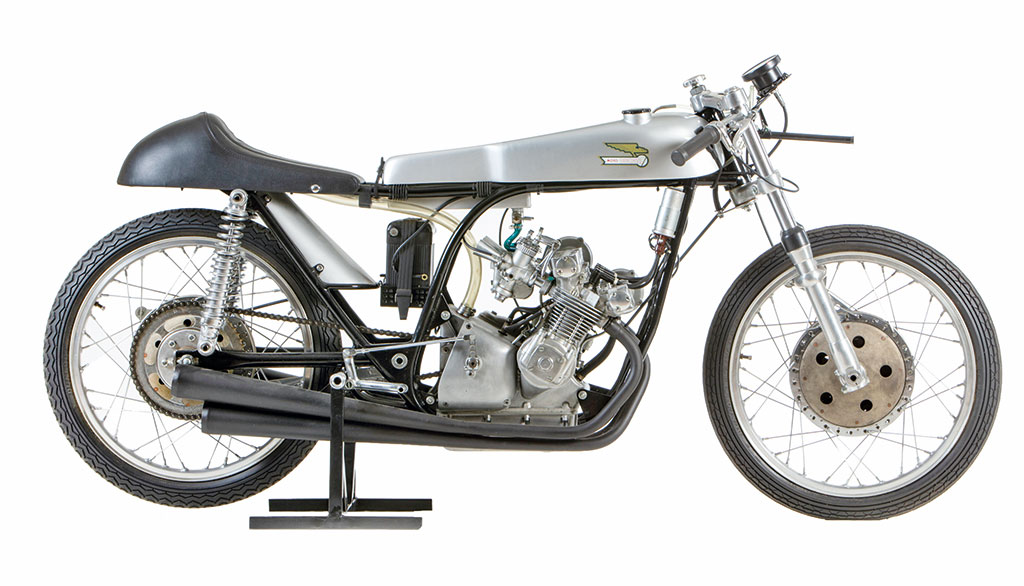
The bike looked good, the trouble was the usual: to make the war it takes money and the Ducati of that time, under the state management of EFIM, had few to spend on racing.
So few that, at the end of 1959, he retired the official team, but maintained a “ghost presence” through “private-but-not-too-” teams such as the Speedy Gonzales team, which happened to be part of Franco Farnè,
and later the NCR team. Carried out without too much conviction, or rather without too much means, the revolutionary four-cylinder project did not come to fruition until 1965.
The development of the Italian bike had just begun and Franco Farnè, taglioni’s rider, tester and right-hand man, drove it on the Modena track, where Ducati tried its racing bikes.
“According to my father, the four-cylinder 125 was not bad – recalls Giancarlo, one of the two sons – but the engine was suitable for fast circuits rather than slow ones, because it had little shooting at the bottom”.
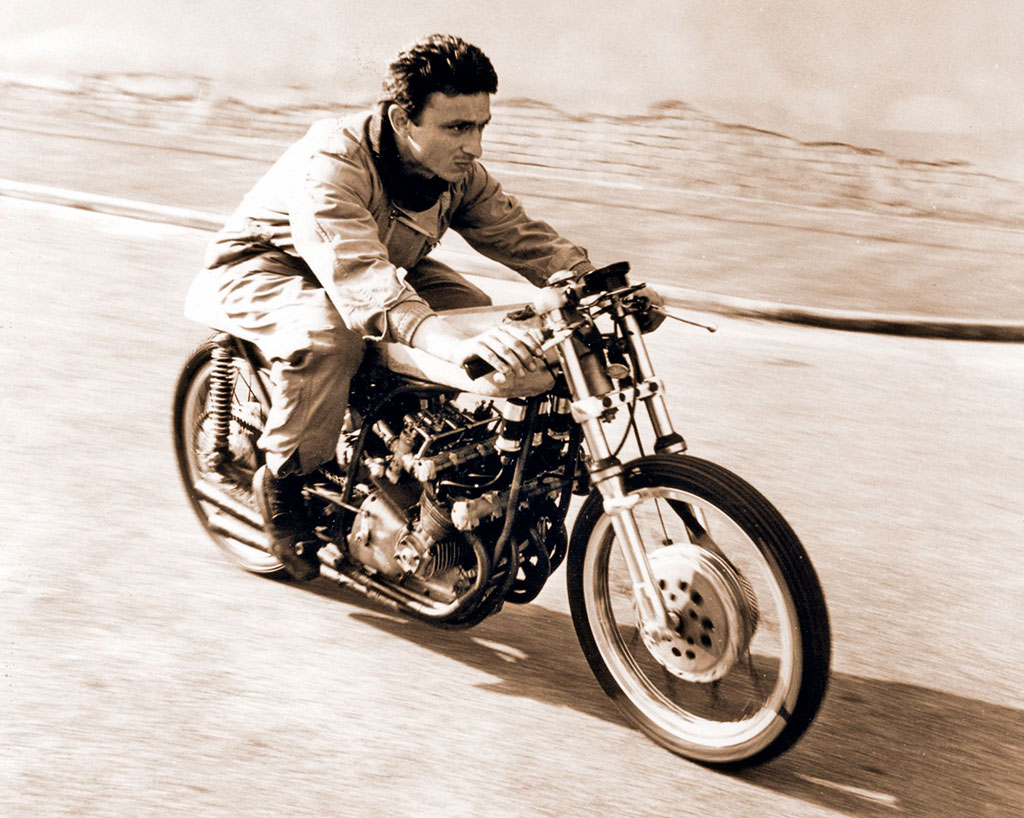
In the meantime, however, the Japanese had not been to sleep and the year before, in 1964, Honda had taken to the field in the grand prix motorcycle racing with
The Ducati 125 four-cylinder suddenly found itself overtaken by events: had 23 hp at 14,000 rpm against the 25 Hp of the Honda 4 cylinders and the 30 of the 5 cylinders, not to mention the 34 declared by Yamaha, perhaps a little too many, probably detected in another way.
Having faded the possibility of collecting glory in racing, the multi-fractional Bolognese was shelved and for a time the engine was mounted on a kart to do experiments on behalf of Tecno, which built single-seater cars and had a close collaboration with Ducati.
Then it became a show bike:it was exhibited at the salons in London, Paris and Milan and since Ducati at that time also produced industrial engines, it was brought as an element of reference to an agricultural fair in the Soviet Union.
There she remained, for mysterious bureaucratic reasons that intertwined with politics and made it impossible to bring her back to Italy.
It was not until 1989 that the engine was tracked down by a fan in the Riga Technical Museum in Latvia, where John Surtees managed to buy it and bring it back to Europe.
The frame was missing and it is not a little. It was not even possible to reconstruct a faithful copy because neither the Verlicchi worker who had made it at the time, nor the engineer Taglioni who with great availability had offered to redesign it, remembered its measurements. He was found almost miraculously by Giovanni Perrone, a great expert, collector and above all friend of John Surtees.
At the vintage motorcycle exchange exhibition in Reggio Emilia, Walter Simonini of Trieste, also a collector, had shown him photographs of a strange Ducati with the single-crankshaft 250 engine mounted on a much wider chassis than necessary (for a single cylinder) and with the engine bindings postponed, but with the original ones still visible.
It was “that” chassis, purchased at the end of 1960 by Gilberto Parlotti, he also from Trieste, that that single-cylinder Ducati engine had used in some races; then he ended up in Yugoslavia where Simonini had found him.
Surtees, warned by Perrone, bought it and later sold everything to Morbidelli.
Put together the pieces of the puzzle, the industrial-collector had only to carry out a demanding restoration, tracing all the components of the time and reconstructing numerous details, including the tank.
Then he went to pick up Farnè who confirmed that the restoration had been carried out with all the criss, certifying the originality of a machine that may not have made history, but certainly ignited many dreams.
Photo Bonham’s
Ducati 125 4-cylinder data sheet
ENGINE:Four cylinders facing gear, four-speed. Distribution of double camshaft at the head of four valves per cylinder, controlled by gears. Displacement: 124 cc. Reaming and running: 34.5 × 34 mm. Compression ratio 12:1. Power supply: four SS1 garden carburetors. Forced wet carter lubrication with gear pump. Battery ignition with dots and capacitors.
TRANSMISSION:gear primary, chain ending. Multiple disc clutch, eight-speed gearbox.
CYCLING:frame in closed double cradle tubes. Suspensions: front telehydraulic fork Ceriani GP; swinging swingarm rear and two shock absorbers. Brakes: front and rear Oldani drum. Tyres: front 2.50 × 18″; rear 3.00 x 18″. Dry weight: 85 kg.
POWER:23 hp at 14,000 rpm.
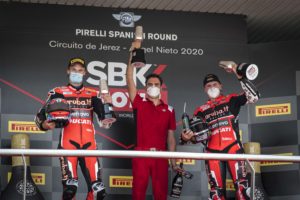
SBK a Jerez: avanti tutta!
A Jerez de la Frontera, seconda tappa del campionato SBK, si ri-accende lo spettacolo con Ducati protagonista. Doppietta di Redding e secondo posto in gara 2 per Davies.
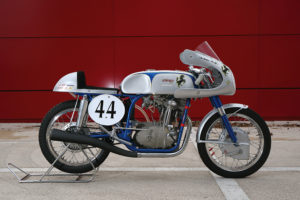
Ducati 125 da GP con telaio Reynolds
Vi presentiamo il risultato del restauro, effettuato da Massimo del Biondo, su di una Ducati 125 con telaio Reynolds.

